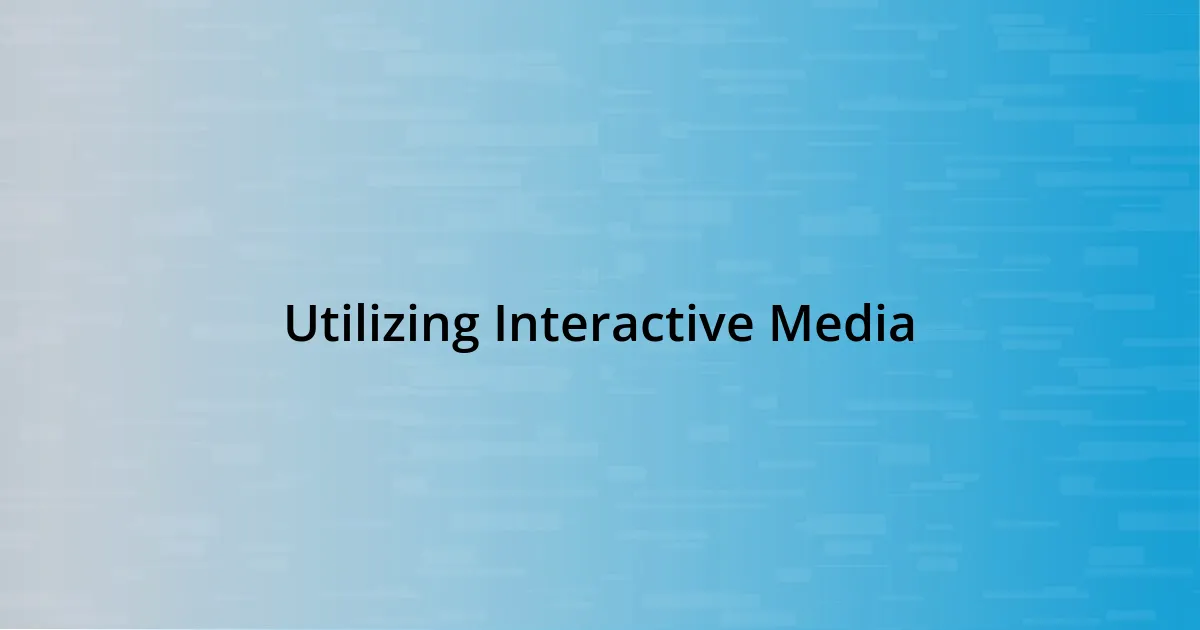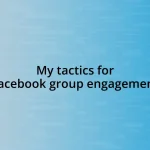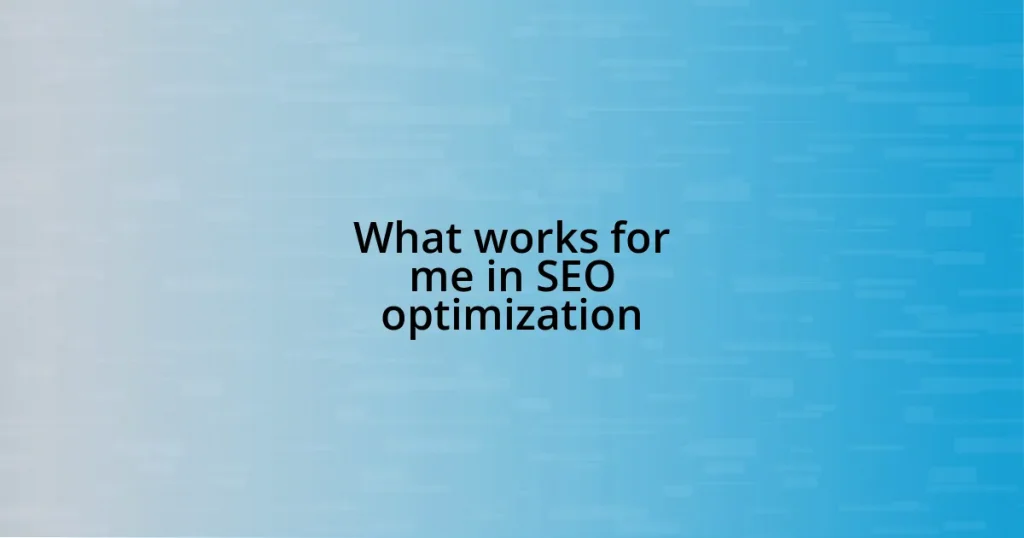Key takeaways:
- Storytelling is a powerful tool for creating emotional connections and enhancing audience engagement.
- Incorporating interactive elements, such as polls and Q&A sessions, transforms passive listening into active participation.
- Utilizing feedback to adapt content can significantly improve audience connection and make sessions more relevant.
- Visual elements and humor can greatly enhance content appeal and promote memorability in presentations.

Understanding Audience Engagement Strategies
One key strategy I’ve found effective in audience engagement is storytelling. When I share my personal experiences related to a topic, I often see people’s eyes light up—it’s like I can almost feel their anticipation. Have you ever noticed how a well-told story grabs your attention and keeps you hanging on every word? That emotional connection is what makes storytelling a powerful tool.
Another approach is to actively encourage feedback. I remember a time when I asked my audience for their thoughts on a new initiative I was considering. The insights they provided were invaluable and gave me a deeper understanding of their needs and preferences. Wouldn’t you agree that involving your audience in the conversation not only empowers them but also strengthens their loyalty?
Lastly, using interactive elements, such as polls or questions, keeps the engagement dynamic. I once incorporated live polling during a presentation, and the energy in the room shifted dramatically. People were not just passive listeners; they became active participants. Isn’t it invigorating when you can transform a lecture into a lively dialogue?

Identifying Your Target Audience
To effectively identify your target audience, I always start by considering who would genuinely benefit from what I’m sharing. Reflecting on my own journey, I recall when I launched a workshop aimed at budding entrepreneurs. Initially, I aimed for a broad group, but I quickly realized that zeroing in on those just starting out was far more impactful. By honing in on their specific struggles and aspirations, I fostered a stronger connection, which ultimately made my sessions more engaging and worthwhile.
To pinpoint your target audience accurately, consider exploring these aspects:
- Demographics: Age, gender, income level, and education can provide a framework for who your audience is.
- Interests and hobbies: Understanding what your audience enjoys can guide the tone and topics you engage with.
- Pain points: What challenges do they face? Identifying these can help tailor your content to address their specific needs.
- Feedback channels: Use surveys or social media insights to actively gather data on your audience’s preferences.
- Personality traits: Consider their motivations and values. This insight might transform the way you communicate your ideas.
By diving into these factors, you can build a clearer picture of who you’re talking to, making your engagement strategies far more effective.

Creating Compelling Content
Creating compelling content is essential for audience engagement. One method I frequently use is incorporating visual elements to break up text and enhance understanding. I remember the first time I added infographics to my presentations. The audience’s reaction was immediate; their faces lit up with interest, and I could sense their engagement level soar. When content is visually appealing, it not only garners attention but also helps convey complex information more effectively.
Moreover, I’ve found that integrating humor can create a relatable atmosphere. On a podcast episode, I decided to share a light-hearted anecdote about a mix-up in a project I managed. The audience responded with laughter, and it felt wonderful to foster a connection through shared amusement. Humor has a unique way of making content memorable, encouraging a sense of camaraderie between the speaker and the audience.
Finally, authentic and passionate delivery can’t be overstated. I once attended a talk where the speaker shared their journey with such enthusiasm that I was drawn in completely. Personally, I strive to channel that same passion whenever I present. When you genuinely believe in your message, it resonates with your audience, making them more likely to connect and engage with the content.
| Approach | Description |
|---|---|
| Visual Elements | Using infographics and images to enhance understanding and break up text. |
| Humor | Incorporating light-hearted stories to create relatability and foster connection. |
| Authentic Delivery | Presenting with genuine passion to engage and resonate with your audience. |

Utilizing Interactive Media
Utilizing interactive media has become a game-changer for me when it comes to audience engagement. One memorable experience was during a webinar where I incorporated live polls. Watching the audience actively vote in real-time transformed the atmosphere; it felt less like a presentation and more like a collaborative conversation. I could sense their excitement and interest, which encouraged even quieter attendees to share their thoughts. Have you ever noticed how participation can shift the dynamic between speaker and audience?
Another impactful tool has been integrating Q&A sessions into my content. I remember hosting a workshop focused on digital marketing where I dedicated the last portion for this. Observing participants light up as they asked questions sparked so much discussion. It made the content feel truly relevant to their challenges. They didn’t just want to consume information; they craved interaction. This experience taught me that when audiences see their input valued, their connection deepens, fostering a sense of community.
Lastly, I’ve experimented with gamification in my presentations. For a training session, I created a friendly competition revolving around key concepts. As participants raced to answer questions, the energy in the room skyrocketed. Not only did it make the learning process enjoyable, but it also reinforced the material in a memorable way. I often reflect on how playful elements can transform what might be considered dry topics into engaging experiences. Isn’t it fascinating how a little creativity can unlock a world of interaction?

Measuring Engagement Success
Measuring the success of audience engagement starts with data analysis. I find it crucial to track metrics like audience retention rates during presentations. For instance, during one of my recent webinars, I noticed a significant drop-off at a particular segment. It prompted me to adjust my content delivery, making it more interactive to keep viewers hooked. Have you ever looked at your analytics and realized there’s a pattern worth exploring?
Another element I pay attention to is feedback collection. After a workshop, I often send out surveys asking attendees what resonated most with them. In one memorable case, the feedback highlighted that my storytelling style was a hit, prompting me to weave more personal narratives into my sessions. Understanding what my audience enjoys not only boosts engagement but makes my content more aligned with their interests. How often do you seek feedback to fine-tune your approach?
Lastly, social media engagement can serve as a valuable indicator of success. I remember posting a snippet from a recent talk on my social channels, and the comments poured in. People were not just liking the post; they were discussing the concepts further. It’s moments like these that show me my content is sparking conversations and connections beyond the initial presentation. In what ways do you keep the dialogue going with your audience after the spotlight fades?

Adapting Strategies Based on Feedback
Adapting my strategies based on audience feedback has been a transformative journey for me. I recall a conference where I initially planned to cover a wide range of topics. However, after a quick poll, it became clear that attendees were most interested in a specific area. Shifting my focus not only energized the room, but it also made me feel more connected with their needs. Have you ever adjusted on the fly, only to find it leads to unexpected insights?
I also lean heavily on direct feedback during and after sessions. Once, I facilitated a roundtable, and midway through, a participant expressed confusion about a concept I introduced. Rather than brushing it off, I paused the discussion to clarify. The gratitude in their eyes really drove home the point that my content should resonate clearly with everyone. Feedback isn’t just a tool; it’s an opportunity to foster understanding. How often do we stop to seek clarity during a dialogue?
Equally important is implementing adjustments based on feedback received in surveys. After a recent workshop, the collective emphasis was on wanting more practical applications of the theories discussed. Taking this to heart, I revamped my approach for the next session, adding case studies and real-world scenarios. It felt rewarding not just to make changes, but to see participants engage more actively. Isn’t it fascinating how a few adjustments based on honest feedback can create a richer experience for everyone involved?















